Bringing a new litter of puppies into the world is an exciting prospect for many pet parents, but responsible breeding is crucial to ensure the health and well-being of both the mother dog and her offspring. But is it the right thing to do?
There’s a lot of considerations surrounding the breeding of dogs, and as rescues and shelters fill up, it’s really important that we consider the impact of the actions we take with our dogs to ensure that we’re not creating more problems than we’re solving.
So let’s take a little look at when a dog can have puppies, when they should have puppies and the considerations you should be making if you’re considering breeding your dog.
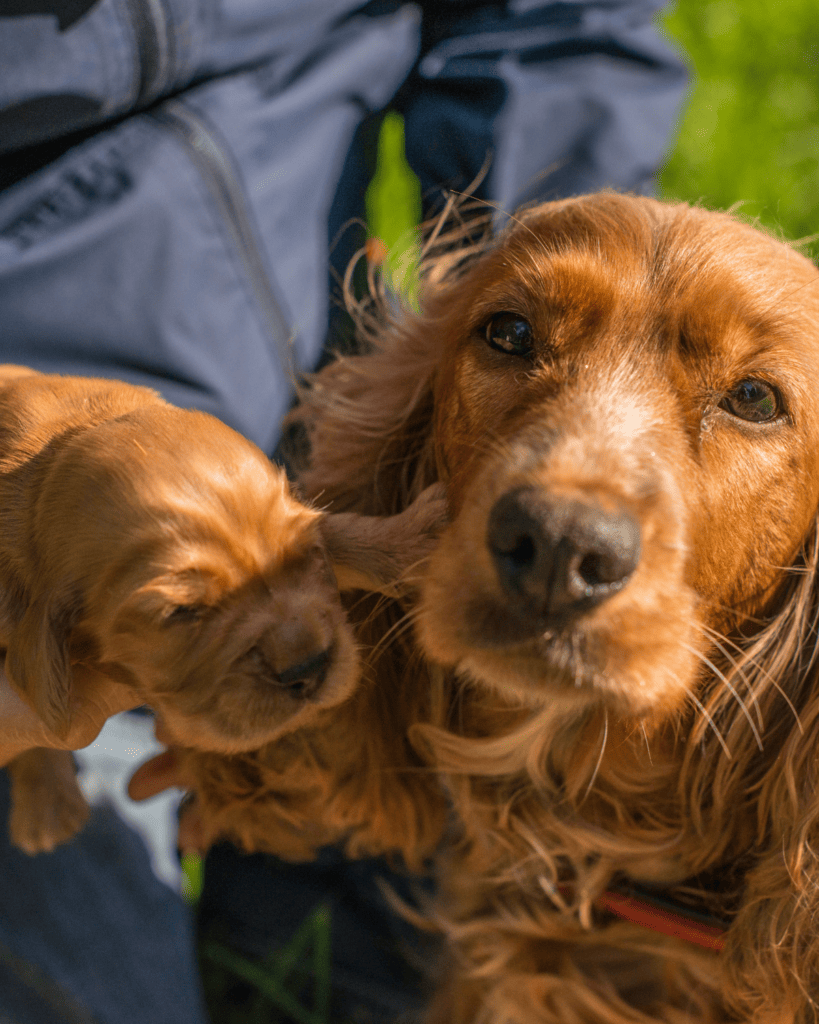
The Short answer:
Suggested age: minimum 2 years
Whilst our dogs are able to reproduce after their first season (or heat), however they shouldn’t be purposefully bred until after 2 years of age to prevent future health issues.
Sexual Maturity and the First Heat Cycle
Female dogs typically reach sexual maturity between six to 12 months of age, and it’s a really critical milestone in their development. This timeline can vary, especially between small and large breeds; small breeds often experiencing their first heat cycle earlier than their larger counterparts. This first heat cycle is a significant indicator of a female dog’s readiness for breeding, marked by behavioral changes such as heightened affection towards male dogs, restlessness, and a swollen vulva.
Understanding the intricacies of a dog’s first heat cycle is essential for responsible dog owners, particularly when it comes to breeding considerations. Young dogs undergoing their initial cycle may lack the emotional and physical maturity required for successful breeding and may suffer as a result (think about teenage human parents). While some dogs may conceive during their first cycle, it is generally considered best practice to wait until the second or third cycle for breeding. This precaution promotes better emotional maturity and reduces potential health risks associated with early breeding, ensuring the overall well-being of both the mother and her offspring.
7 Risky Sideaffects of Early Breeding
- Premature Maturing: Early breeding can cause dogs to mature too quickly, leading to possible developmental and behavioral issues.
- Health Risks for the Mother: Early breeding could introduce health complications for the mother dog, including a weakened immune system, decreased lifespan, and increased susceptibility to diseases.
- Birth Complications: There’s a higher chance of complications during birth, such as dystocia (difficulty giving birth), for young mother dogs.
- Inadequate Puppy Care: Youthful mother dogs may not be physically mature enough to nurse or care for their puppies properly, potentially leading to malnourished or weak litters.
- Offspring Risks: Puppies born of early breeding may be at risk of inherited health problems and have a lower survival rate.
- Life-Threatening Conditions: Severe cases of early breeding can expose mother dogs to critical circumstances like eclampsia and uterine infections.
- Increased Risk of Cancer: Early breeding may result in a higher risk of cancers such as mammary cancer in female dogs.
All in all, the risks really outweigh the benefits, and consequently it’s not considered ethical to breed a juvenile dog.
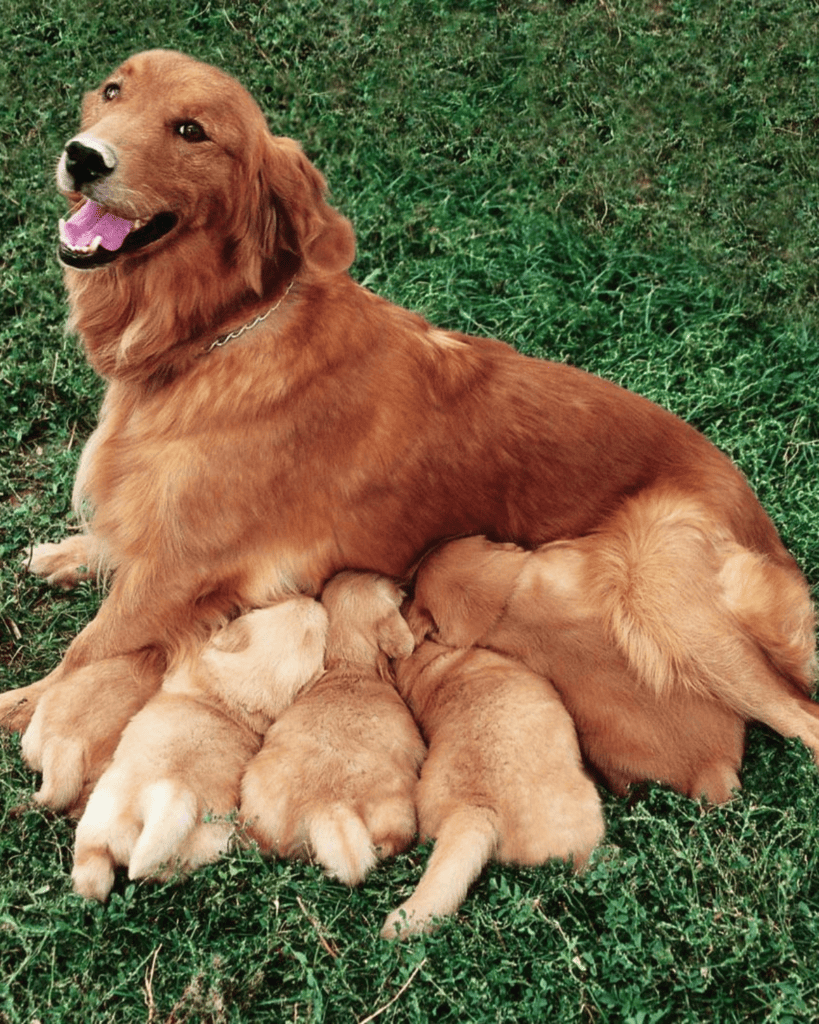
It is also essential to consider the age of the dog in the context of breeding decisions. While smaller dogs may reach sexual maturity earlier, waiting until the second or third heat cycle is advisable for both small and large breeds alike. This practice aligns with the dog’s emotional maturity and overall well-being. Owners should be mindful of the dog’s health, particularly with larger breeds, as they may have different considerations and potential health issues. Responsible breeding practices involve understanding the unique needs of toy breeds, large breed dogs, and everything in between, taking into account the specific characteristics of each breed.
When Is Best Time for Breeding?
Determining the best time for breeding involves considering the overall health and age of the female dog. The American Kennel Club (AKC) recommends waiting until the dog is at least two years old before attempting to breed. This guideline is particularly crucial for larger breeds, such as Great Danes or giant breeds, where early breeding may contribute to health problems like hip dysplasia.
The age recommendation is rooted in the physical and emotional maturity required for a successful pregnancy and whelping. Breeding at an older age, beyond two years, also allows the dog’s reproductive system to fully develop, increasing the likelihood of a healthy pregnancy. Additionally, it provides breeders with valuable time to conduct health tests and screenings, ensuring that both the male and female dogs are free from genetic defects that could be passed on to the offspring. Responsible breeders prioritize the long-term health and well-being of the dog breeds they work with, following established guidelines to produce healthy litters.
Moreover, the best time for breeding aligns with the dog’s overall well-being and lifestyle. It’s essential to consider the dog’s living conditions, nutritional needs, and general health. Responsible breeders pay attention to the dog’s diet, ensuring it is well-balanced and nutritionally optimal for both the mother and potential puppies. A healthy breeding environment contributes to the overall success of the process and the well-being of the canine family.

Why We Need Health Tests and Other Considerations
Before embarking on the breeding journey, responsible dog breeders prioritize health tests and screenings for both female and male dogs. Regular veterinary care, including hormone tests and blood tests, plays a crucial role in assessing the dog’s overall health and reproductive cycle. These tests provide insights into potential genetic defects or health issues which could affect the litter.
Health considerations extend beyond the reproductive system, encompassing the general well-being of the dogs involved. Breeders focus on maintaining the best possible health for the mother dog, ensuring she is in optimal condition for conception, pregnancy, and whelping. Attention to nutritional needs is paramount, with a balanced diet, including high-quality puppy food, supporting the mother’s health and the development of healthy puppies. The breeding process is a holistic endeavor for responsible breeders, encompassing physical and genetic aspects to produce litters that thrive from birth and throughout their lives with their future families.
Furthermore, responsible breeders prioritize pre-breeding health checks for both male and female dogs to identify potential risks or conditions that might affect the pregnancy or the health of the puppies. Conducting these tests well in advance allows breeders to make informed decisions and take necessary precautions to ensure a successful and healthy breeding process.
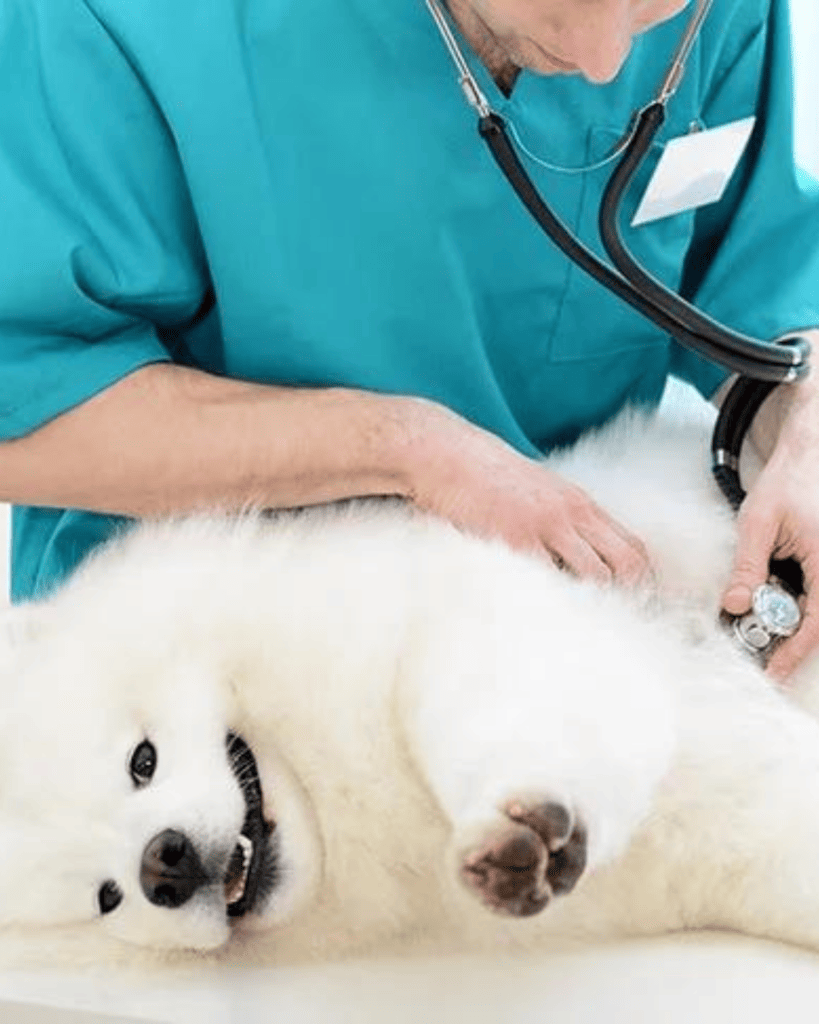
Considerations Of Breed
Large and giant breed dogs require special attention when it comes to breeding, as to some breeds like french bulldogs who often have to have puppies birthed via a ceserian. The size and weight of these dogs can impact their physical well-being, and therefore, it’s advisable to wait until they are at least two years old before attempting to breed. This waiting period allows for proper physical development, reducing the risk of conditions such as hip dysplasia.
Responsible breeders of large and giant breeds also consider the potential for back-to-back breeding, where a female dog is bred in consecutive heat cycles without sufficient recovery time. This practice can lead to health issues for both the mother and the puppies. Following the rule of thumb, responsible breeders allow for adequate rest between litters, ensuring the well-being of the mother and the overall success of the breeding program.
Additionally, large and giant breed dogs may require specialized care during pregnancy. Providing a comfortable and spacious whelping box is essential for the well-being of the mother and the proper development of the puppies. Responsible breeders carefully plan for the whelping process, considering the unique needs of these larger breeds to create a safe and conducive environment for the delivery and care of the puppies.

Breeding Process and Care
During the breeding process, responsible breeders take several crucial steps to ensure the health and well-being of the mother dog and the future litter of puppies. Providing proper nutrition is a top priority, with a focus on high-quality puppy food that meets the specific dietary requirements for pregnant and nursing dogs.
Responsible breeders also pay close attention to the living conditions of the mother dog, ensuring a stress-free and comfortable environment. This includes creating a suitable whelping area where the dog can give birth and care for her puppies. The whelping box should be spacious, clean, and well-equipped with bedding to ensure the safety and warmth of the newborn puppies.
In addition to physical care, responsible breeders also monitor the mother dog’s emotional well-being during the breeding process. Stress and anxiety can impact the pregnancy and the overall health of the litter. Creating a calm and supportive atmosphere, minimizing disruptions, and providing positive interactions contribute to a positive breeding experience for the mother dog.
Moreover, responsible breeders understand the importance of early socialization for the puppies. Exposing them to various stimuli and positive experiences from an early age contributes to their overall well-being and development. This proactive approach sets the foundation for well-adjusted and sociable adult dogs, ensuring a positive impact on the lives of the puppies and their future owners.

Behavioral Changes and Signs of Pregnancy
Understanding the behavioral changes and signs of pregnancy in a female dog is a fundamental aspect of responsible dog ownership and breeding practices. This awareness allows pet owners and breeders to provide the necessary care and support to ensure the well-being of the pregnant dog and the successful development of the litter. During pregnancy, a dog’s behavior may undergo noticeable changes, including heightened affection, shifts in appetite, and nesting behaviors as she prepares for the impending arrival of her puppies.
It’s crucial to recognize that these behavioral changes can manifest differently in individual dogs, regardless of their size or breed. Smaller breeds and larger dogs alike may exhibit variations in their response to pregnancy. Some dogs may become more affectionate, seeking additional attention and companionship, while others may display more reserved behavior. These individual differences highlight the importance of attentive observation by dog owners and breeders to tailor care to the specific needs of the pregnant dog.

Observing behavioral changes in conjunction with physical signs is key to confirming a dog’s pregnancy. Physical indicators, such as a growing abdomen and mammary gland development, complement behavioral shifts, providing a comprehensive understanding of the dog’s condition. For responsible dog breeders, especially those overseeing a pregnancy for the first time, it’s advisable to consider the age of the adult dog and any potential health considerations. Conducting a blood test can offer valuable insights into the dog’s health during pregnancy, helping to identify any underlying issues and ensuring the best possible care for both the mother and her soon-to-arrive litter. By navigating these important considerations, responsible dog owners and breeders contribute to a positive and supportive environment for their pregnant dogs.
Responsible breeders actively engage with the mother dog during this time, providing the necessary care and addressing any potential concerns. Regular veterinary check-ups become even more critical during pregnancy to monitor the health of both the mother and the developing puppies. This proactive approach ensures that any health issues or complications are identified and addressed promptly, contributing to the overall well-being of the pregnant dog and the successful delivery of a healthy litter.
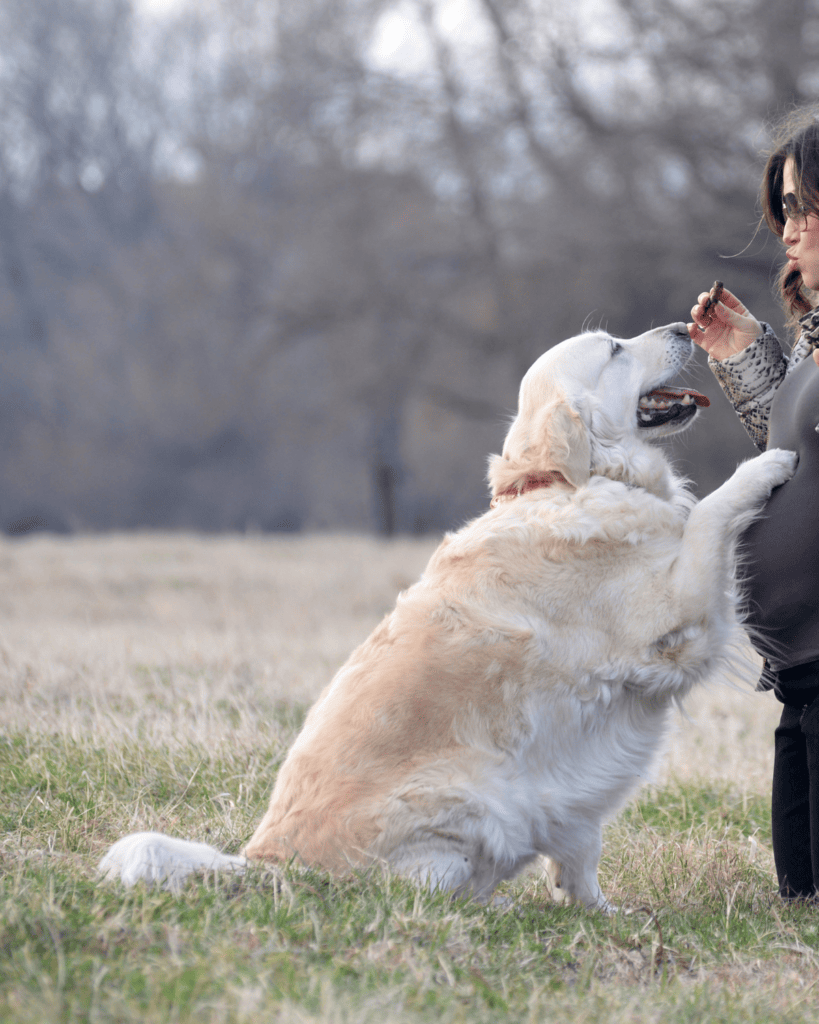
Age Limit and Responsible Breeding
While there isn’t a strict age limit for breeding, responsible breeders consider various factors when deciding when to breed a female dog. Breeding a dog in her senior years can pose health risks and may result in smaller litters or complications during delivery. As a general guideline, breeders aim to balance the dog’s age with her overall health and reproductive capabilities.
Most breeders deemed responsible only allow a breeding female to have 2 to 4 litters in their lifetime, and no more than 2 litters a year.
Responsible breeders understand that each dog is unique, and factors such as breed, size, and individual health should be taken into account. It’s essential to prioritize the well-being of the mother dog and the potential health of the puppies. Breeding a dog at an advanced age may increase the likelihood of health issues, including complications during pregnancy and birth.
Moreover, age-related considerations extend beyond the reproductive aspect. Older dogs may be more susceptible to certain health conditions, and responsible breeders take these factors into account when making breeding decisions. Regular veterinary check-ups become even more crucial for older breeding dogs, ensuring that they are in good health and capable of handling the demands of pregnancy and whelping.

Avoiding Unwanted Litters
Responsible dog breeders play a crucial role in preventing unwanted litters. Following the rule of thumb and being mindful of the dog’s reproductive cycle can help in managing breeding responsibly and avoiding overpopulation. Unwanted litters contribute to the growing number of homeless animals, and responsible breeders actively work towards minimizing this issue.
One of the key ways to prevent unwanted litters is through spaying or neutering dogs that are not intended for breeding at an appropriate age.
It’s also good to note that if an accident does happen, there are a few options for your dog;
- the “morning after pill” for dogs
- emergency terminations
- termination spays
These are particularly important if there is a significant disparity in size between the male and the female as there is a risk that the puppies could endanger the mother if they grow too big inside a smaller dog.
This not only helps control the population but also has health benefits for the individual dog. Responsible breeders educate pet owners about the importance of spaying and neutering, advocating for responsible pet ownership and contributing to efforts aimed at reducing the number of animals in shelters.
Additionally, responsible breeders prioritize finding suitable homes for the puppies they breed. Screening potential owners, providing information about the specific breed’s characteristics, and offering guidance on responsible pet care contribute to creating a positive and responsible breeding experience. By taking proactive measures, responsible breeders play a vital role in ensuring that every puppy finds a loving and permanent home.

Genetic Mutations and Defects
Regular health tests and genetic screenings help identify potential genetic mutations and defects. Responsible breeders prioritize the well-being of the dog breeds they work with, aiming to produce healthy puppies that will thrive in their new homes – and noteably good breeders rarely breed for a specific coat color, or peculiar shape. Genetic testing has become an integral part of responsible breeding practices, allowing breeders to make informed decisions about pairing dogs for breeding.
Understanding the genetic history of a dog and conducting tests for known genetic mutations contribute to responsible breeding. This proactive approach helps prevent the transmission of hereditary diseases to future generations, promoting the overall health and longevity of the breed. Responsible breeders collaborate with veterinary professionals and genetic specialists to stay informed about advancements in genetic testing and to continually improve breeding practices.
Moreover, responsible breeders actively participate in breed clubs and organizations that promote ethical breeding standards. These organizations often establish guidelines and recommendations for health testing specific to each breed, which should be similar to those of the OFA but likely more in depth.
By staying involved in such communities, breeders contribute to a collective effort to eliminate or reduce the prevalence of genetic mutations and defects within a particular breed, prioritising health, temperament and quality.

Being A Good Dog Isn’t Enough
I know when you look at your dog your heart melts – but that’s not a good enough reason to breed them. If you love your dog, and you think there should be more like her or him in the world? Then support your breeder who bred them to be the good dog they are. Recommend them! You don’t need to breed your dog.
Understanding the age at which a dog can have puppies is just the beginning of responsible breeding. Pet owners should prioritize the health and well-being of their dogs, conducting necessary health tests, and following guidelines set by reputable organizations like the AKC and UK Kennel Club. By being informed and proactive, responsible dog breeders contribute to the betterment of dog breeds and ensure a bright and healthy future for their four-legged companions. Responsible breeding is not only about producing puppies but also about fostering the overall health, temperament, and longevity of the breed for generations to come.

Author, Ali Smith
Ali Smith is a professional, qualified, and multi-award winning trainer is the founder of rebarkable. She has always believed animals deserve kindness and champions force free methods. Believing that dog guardians will all choose the kindest options if proper information is provided, she aims to help all dog guardians who need it and make dog training as accessible as possible
Ali lives win Maryland, US with her husband and her three dogs.




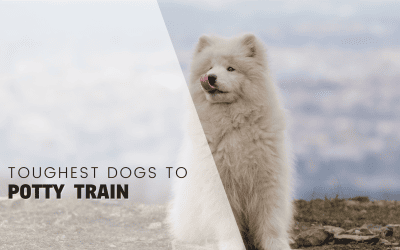

0 Comments